Seven Questions Over Breakfast with Wendell Minor
 March 12th, 2014 by jules
March 12th, 2014 by jules
Author-illustrator Wendell Minor, self-described bird- and cloud-watcher, “takes his young readers very seriously,” wrote Jean Craighead George, Newbery Award-winning writer for children, in a personal reminiscence of Minor before her death in 2012. “Just as he wants them to see the buffalo or crane in its accurate environment, he wants them also to feel that this animal is so loveable that it must be saved.”
This reminiscence appears in Wendell Minor’s America: 25 Years of Children’s Book Art, the catalog that accompanies the art exhibit of the same name, appearing at the Norman Rockwell Museum in Massachusetts until May 26, 2014.
As Stephanie Haboush Plunkett, the Chief Curator and Director of the museum, notes in the introduction to the catalog, Minor sold his 1955 Chevy in order to pay for his studies at the Ringling College of Art in Florida after first deciding that he wanted to pursue his life-long love of art (by the time he reached fourth grade, he knew he’d be an artist one day) and eventually moved to New York in 1968 “with little more than his portfolio in hand.” Since then, he’s illustrated over 50 children’s books (see here) and was last year awarded, along with his wife Florence, the The New England Independent Booksellers Association’s President’s Award for lifetime achievement in arts and letters.
Minor brings readers what historian Leonard Marcus describes in the catalog as his own unique Americana. This, he writes, is “a Minor passion born of the artist’s rural Illinois upbringing. For him the Midwest is not a blank patchwork of ‘fly-over states’ but rather a fertile proving ground that has inspired generations of human struggle and transcendence.” Illustration for Minor, Marcus adds, is no less than an act of “total immersion,” as he digs deep into his research and fine tunes every possible detail.
 And after 25 years, it’s evident Minor doesn’t plan to slow down any time soon. Pictured here is an illustration from Robert Burleigh’s upcoming picture book biography, Edward Hopper Paints His World, to be released in August by Christy Ottaviano Books/Henry Holt. (Burleigh and Minor have collaborated frequently; there is more on that below.) “It’s truly the journey that counts,” Minor tells Stephanie in an interview printed in the catalog, “not the destination. I’m still searching, still turning up rocks to find the next challenge.” Exploring and researching the life of Hopper was just one of these many “rocks” for Minor, and something tells me he’s got a lot more to bring us readers.
And after 25 years, it’s evident Minor doesn’t plan to slow down any time soon. Pictured here is an illustration from Robert Burleigh’s upcoming picture book biography, Edward Hopper Paints His World, to be released in August by Christy Ottaviano Books/Henry Holt. (Burleigh and Minor have collaborated frequently; there is more on that below.) “It’s truly the journey that counts,” Minor tells Stephanie in an interview printed in the catalog, “not the destination. I’m still searching, still turning up rocks to find the next challenge.” Exploring and researching the life of Hopper was just one of these many “rocks” for Minor, and something tells me he’s got a lot more to bring us readers.
And those interested in his work have more than just the Rockwell Museum to visit, should they want to see his artwork on display. His work has been exhibited across the country and can currently be seen at the Smithsonian National Portrait Gallery (his portrait for David McCullough’s Truman is going into the permanent collection of the Gallery this year), the Eric Carle Museum of Picture Book Art, the Mazza Museum, and more. The Rockwell exhibition will even travel to South Carolina next year.
I’m glad he’s visiting 7-Imp this morning to share what he’s created and learned over his long and illustrious career. We’re having blueberry pancakes with real Vermont maple syrup and black coffee, and his wife, author Florence Minor, joins us. (Here’s where I wish so hard that these interviews weren’t cyber-interviews, because not only would I love to meet them, but I’m missing out on REAL Vermont maple syrup.)
Let’s get to it …
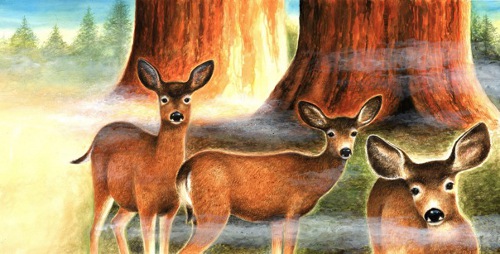
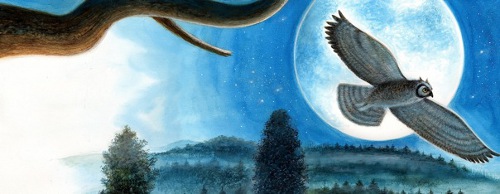

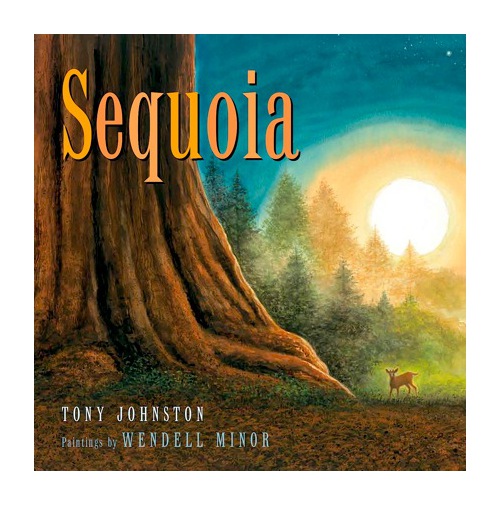
from Neal Porter/Roaring Brook Press, to be released later this year
Jules: What is your usual medium?
Wendell: Windsor & Newton designers gouache on Strathmore 500 Bristol. On occasion, I have painted in acrylic on various wood surfaces, masonite panels, or stretched canvas, all of which produce a totally different effect than watercolor. When I do plein air painting, I use Windsor & Newton cake watercolors on Arches cold press paper.
Jules: If you have illustrated for various age ranges (such as, both picture books and early reader books OR, say, picture books and chapter books), can you briefly discuss the differences, if any, in illustrating for one age group to another?
Wendell: I find that the very young reader is drawn to very simple and strong compositions, as well as a colorful palette. Whenever possible, I like to incorporate a little surprise or clue of some kind –- something that’s not necessarily obvious but that children seem to enjoy finding. Older readers can be offered much more complex and detailed narrative images in chapter and young adult books.
(Katherine Tegen Books, 2013)
(Click each image above to enlarge)
If You Were a Penguin
(Katherine Tegen Books, 2009)
(Click spread to enlarge)
Jules: Where are your stompin’ grounds?
Wendell: My wife, Florence, and I feel very fortunate to live in one of the most beautiful New England towns in Connecticut — and on the East coast for that matter! Washington, Connecticut, was founded in 1779. It has a great Revolutionary War history, and I truly love the fact that our first President visited the local pub in our town on many occasions, run by Colonel Cogswell of Cogswell Tavern. Washington has thousands of acres of nature preserves, beautiful historic homes, and our town Green looks as if it was painted by Norman Rockwell.
 and Laddyuse.jpg)
(Click to enlarge)
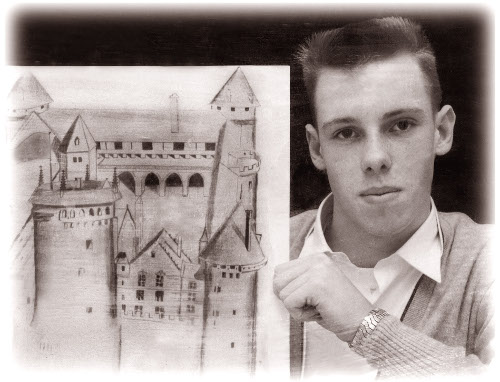
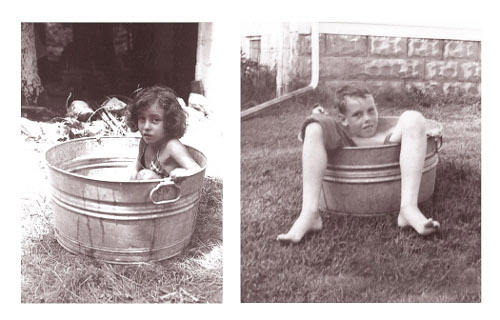
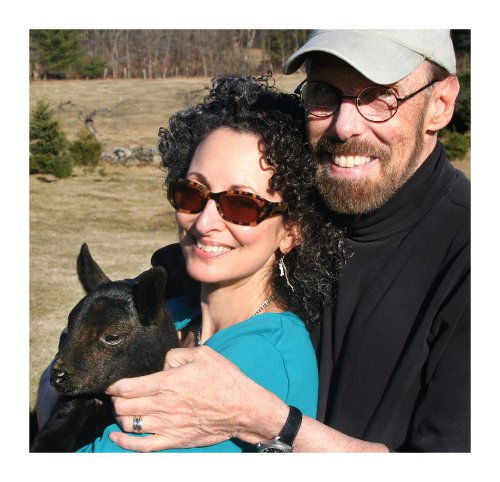
Jules: Can you tell me about your road to publication?
Wendell: My very first published piece of art was completed at Hallmark Cards [see snowman below] immediately after graduating from Ringling College of Art. I didn’t realize how lucky I was to be a published artist at the age of 22!
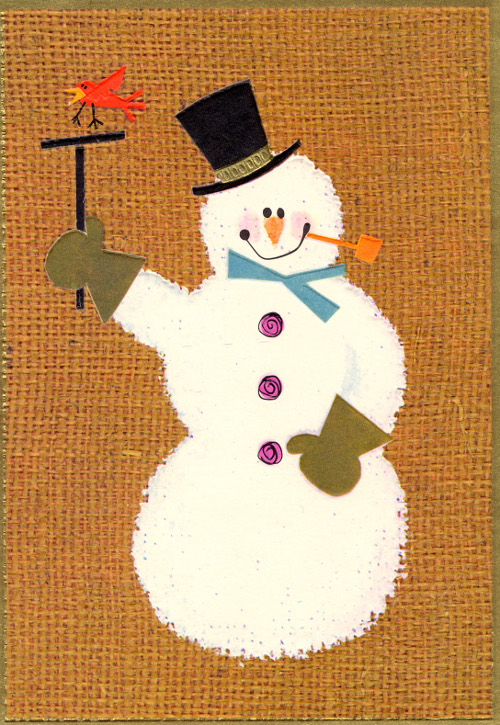
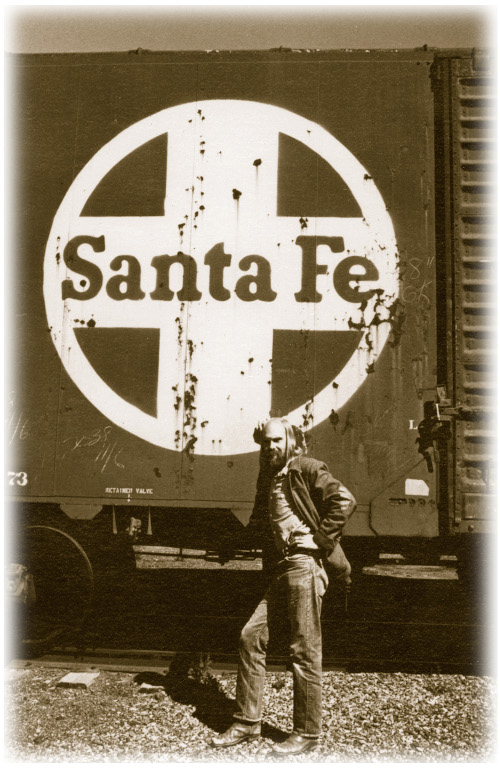
Before coming to New York, I did a brief stint in the advertising world and discovered it wasn’t for me. Upon moving to New York, I was fortunate enough to land a job apprenticing with one of the great book cover designers of his time, Paul Bacon, and before long I had enough work in my portfolio and enough confidence to start my own freelance career -– and I have now been freelancing for more than four decades. (No, I’m not really that old!)
Jules: Can you please point readers to your web site and/or blog?
Wendell: www.minorart.com.
(originally released by Henry Holt in 2008;
paperback reprint edition from Square Fish was released January 2014)
In Wendell Minor’s America, Burleigh writes: “Wendell Minor is, in the best sense, an American Romantic. Or perhaps I should say, a romantic of America.”
(Click each image above to enlarge)

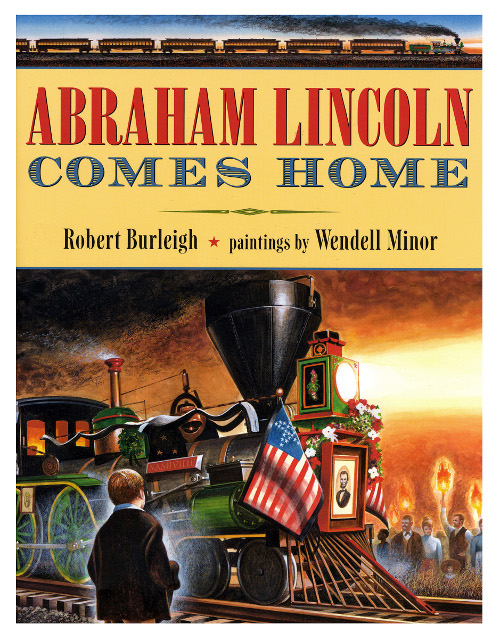
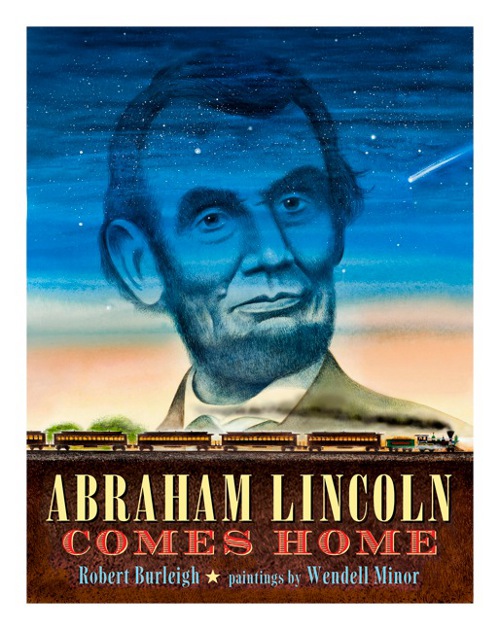
(HarperCollins, 2001)
(Click to enlarge)
Jules: If you do school visits, tell me what they’re like.
Wendell: My usual school visit is a bit like a grown-up version of show-and-tell. I love to show my childhood drawings in my PowerPoint presentation, so my young audience can see that I started out exactly where they are, and that generally prompts a lot of questions. I like to ask my young audience if anyone knows what dyslexia is, and after discussing what it means, I like to tell young readers that I am dyslexic and had to attend special reading classes all through my grade school years. The response from students and teachers alike has always been one of great surprise. I think it’s very important for young students to know that everyone has difficulties and challenges to overcome, and that they too can overcome their own challenges.
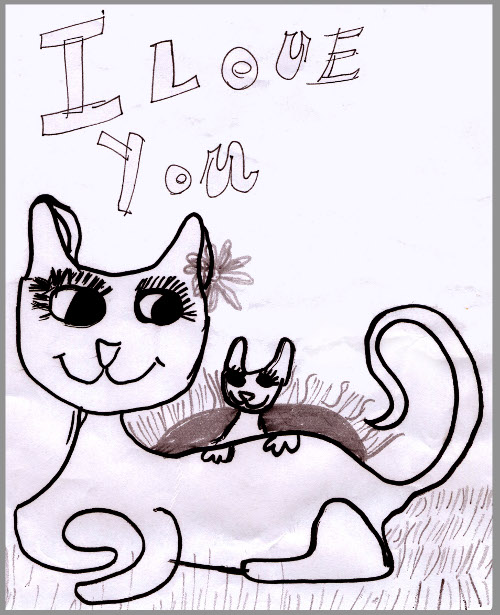
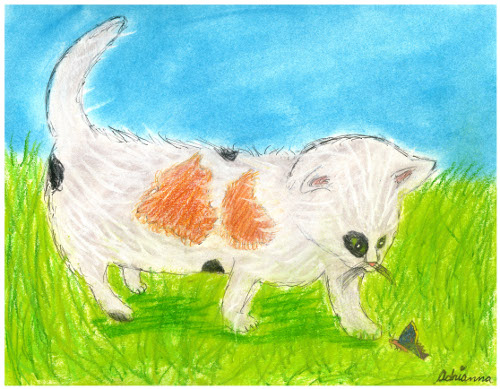
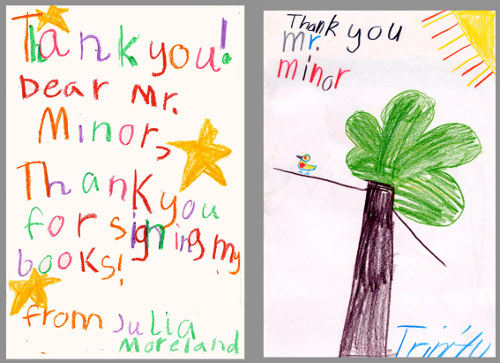
I love to talk about the process of how I create a book and how important it is to have an understanding of history and the natural world. My books have always incorporated an element of teaching history and understanding of nature — and bringing to light biographies of very important people in American history whose stories stress the challenges that everyone must overcome to be good at what they do. I always talk about my love of animals and why they so often show up in my books. One of my very first drawings was of a well-fed-looking robin (which I now refer to as my 500-pound robin — see above). I encourage young students who have difficulty with writing to think about drawing pictures of their pet(s) or a friend’s pet and then writing a story around the pictures. I tell them, “write about and draw what you know, what you love.”
everyone brings a different story to a picture.”
(Click the third one to enlarge)
7-Imp: If you teach illustration, by chance, tell me how that influences your work as an illustrator.
Wendell: I taught for 11 years at the School of Visual Arts in New York City and continue to lecture at art schools and colleges across the country.
The most important thing that teaching has taught me is that it’s one thing to know your craft, but a very different thing to be able to enlighten and instruct others as to how to learn their own craft. Through teaching, I believe I have learned as much about my own shortcomings as an artist as the students may have learned from my strengths as an artist. I approach each class with the premise that the act of creating art is not only a craft, but a point-of-view, a philosophy and a belief that what you have to say as an individual is worth putting on paper.
Reaching for the Moon (HarperCollins, 2008)
(Click each image to enlarge)
Look to the Stars (Putnam, 2009)
(Click each image to enlarge)

(Click to enlarge)
Jules: Any new titles/projects you might be working on now that you can tell me about?
Wendell: This is my 26th year of illustrating picture books, and I have completed over 50 at this time; in fact, everyone is invited to my exhibition at the Norman Rockwell Museum, which opened in November and continues till May 26, 2014, celebrating 25 years of picture book art.
The ones that seem to stand out the most in my mind are some of the older titles, and here are three examples: Charlotte Zolotow’s The Seashore Book, Eve Bunting’s Red Fox Running, and Jean Craighead George’s Everglades. I had the privilege of working with Jean for over twenty years, and in the course of those twenty years we became great friends and collaborated on 18 titles.

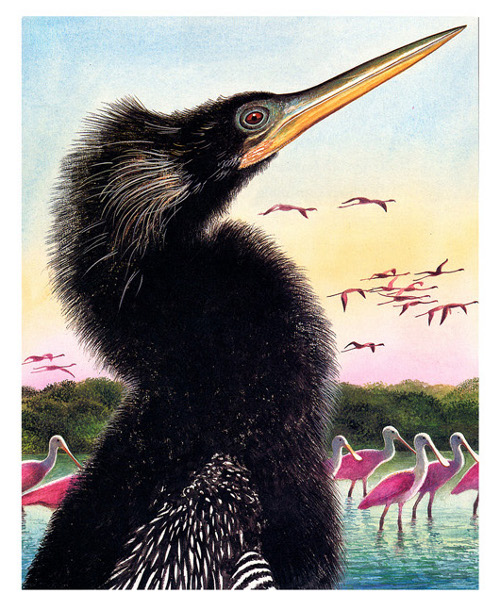
(HarperCollins, 1997)
(Click to enlarge)
(Click to enlarge)
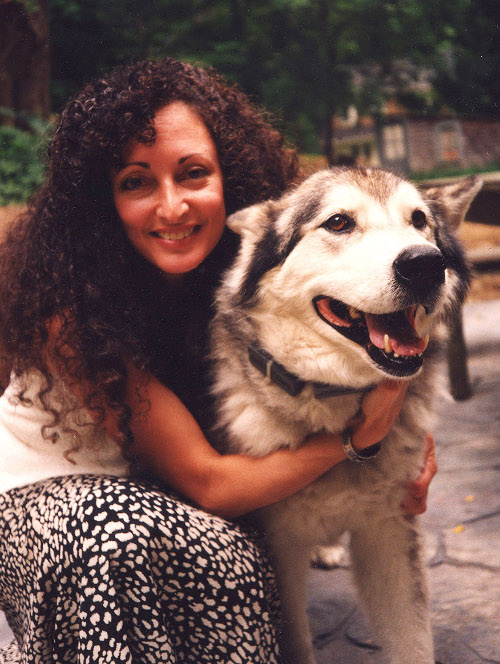
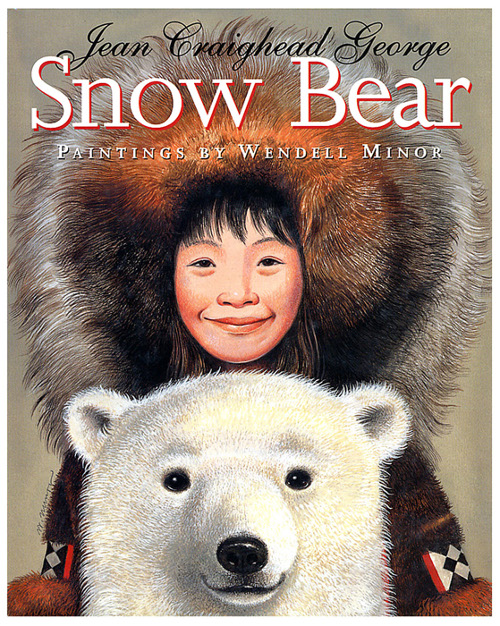
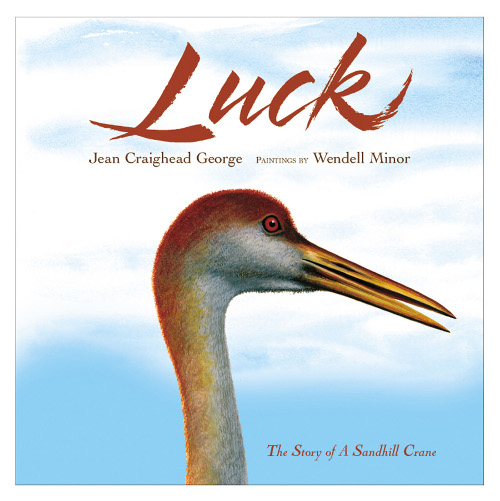
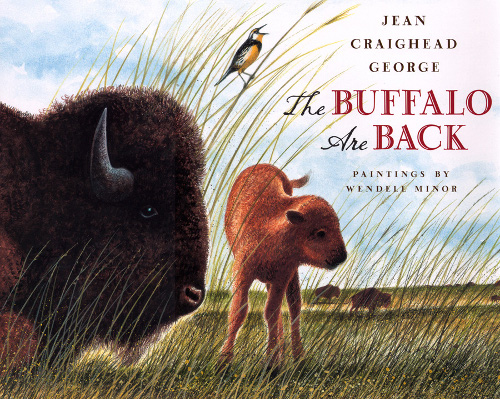
(Click to enlarge)
Jean’s The Eagles are Back (third in the trilogy, following The Wolves are Back and The Buffalo are Back) was published last year (March 2013). All three books in the trilogy are NSTA Outstanding Science Trade Books.

Three bald eagles soared in the thermal winds.”
(Click each image above to enlarge)
And my very last book with her, Galapagos George, will be published on April 8, 2014 (HarperCollins).
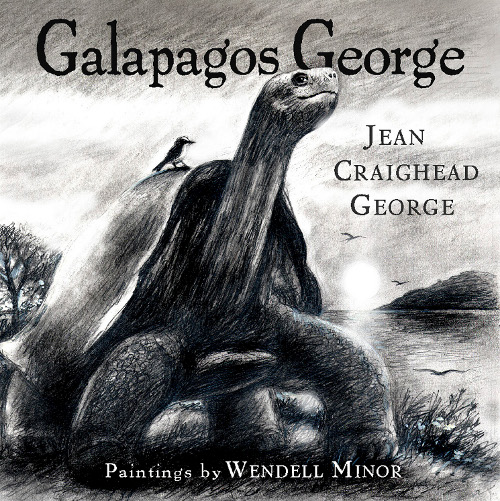

Galapagos George (HarperCollins, April 2014)
(Click each to enlarge)
(Click to enlarge)
at the beginning and at the end. …”
(Click each to enlarge)
In more recent years, I’ve had the privilege of collaborating with other extremely talented authors, including Tony Johnston, Ann Turner and Robert Burleigh. One of my recent published books with Bob Burleigh (2012) is about a contemporary boy spending an imaginary day with Henry David Thoreau at Walden Pond. With If You Spent a Day with Thoreau at Walden Pond (Christy Ottaviano Books/Henry Holt), we strive to encourage children to go outside and experience the wonders of nature firsthand.
(Click each to enlarge)
(Click each to enlarge)
My most recent collaboration with Bob is something I am very excited about, Edward Hopper Paints His World (to be released on August 19, 2014, by Christy Ottaviano Books/Henry Holt) a picture book biography of Hopper’s life. Hopper has been one of my favorite American painters ever since I can remember. His bold, iconic paintings of the American seashore and cities are some of the most treasured images of the twentieth century. Hopper started his career as an illustrator, and from that craft he developed his own personal vision as a fine artist. He once said that, if an artist is true to his core beliefs, his art changes very little from childhood to maturity. Hopper himself is a classic example of this. He grew up in Nyack, New York, along the Hudson River. He loved the river and he loved boats, and his early childhood drawings reflected that. He loved architecture in the city, and he loved the country and the sea. And those basic subjects became the visual lexicon that represents the Hopper we know today — Hopper, the mature artist.
paint sunlight on the side of a house.'”
Edward stayed on the lookout for scenes that moved him …”
(You can click most of those to enlarge them and see in more detail …)
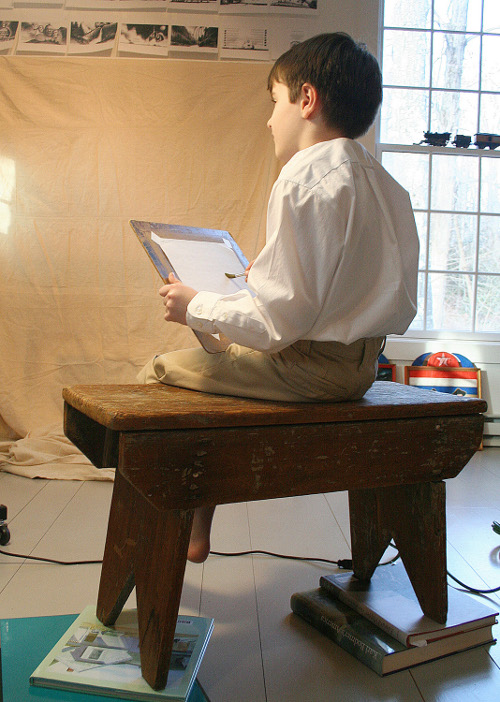
(Click to enlarge)
(Click to enlarge)
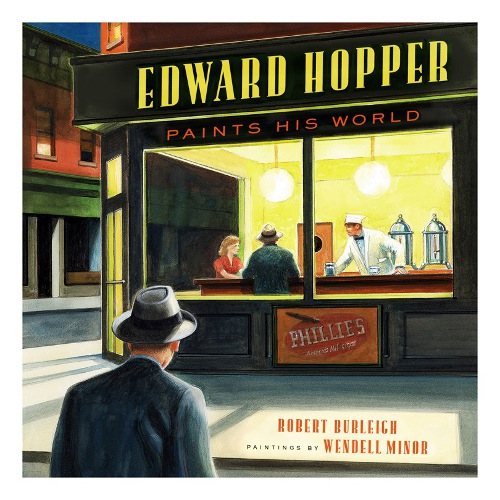
My art has been described as classical, narrative, and realistic, probably because I’ve studied painters for so many years. In creating children’s books, it has been my mission to not only entertain and teach my young audience, but also to have them feel that my books are mini-mobile art galleries.
(Click to enlarge)
(Click to enlarge)
 Coffee’s on, and it’s time to get a bit more detailed with seven questions over breakfast. I thank Wendell again for visiting 7-Imp.
Coffee’s on, and it’s time to get a bit more detailed with seven questions over breakfast. I thank Wendell again for visiting 7-Imp.
1. Jules: What exactly is your process when you are illustrating a book? You can start wherever you’d like when answering: getting initial ideas, starting to illustrate, or even what it’s like under deadline, etc. Do you outline a great deal of the book before you illustrate or just let your muse lead you on and see where you end up?
Wendell: Unlike many illustrators, I conceive a project in collaboration with a number of author friends. We discuss mutual interests and ideas, and from those discussions often comes an idea for a new book. I work closely with all of my authors and editors from early concept to final art — in other words, throughout the entire process of creating a book. I’ve always felt that this creates a better understanding and, more often than not, a much better book, because of the direct communication. It is my understanding that many illustrators do not have this privilege; however, the evolution of my career from collaborating with numerous authors over the years on covers made this way of working a natural segue into children’s books for me. It’s inconceivable to me that I could create a book without having personal contact with the author. [We strive for] a meeting of the minds regarding our collective and respective intentions.
(Click to enlarge)

When Florence and I collaborate on books, we use the same process with the distinct advantage of constantly bouncing words and pictures back and forth. I love this way of working and couldn’t think of doing it any other way.
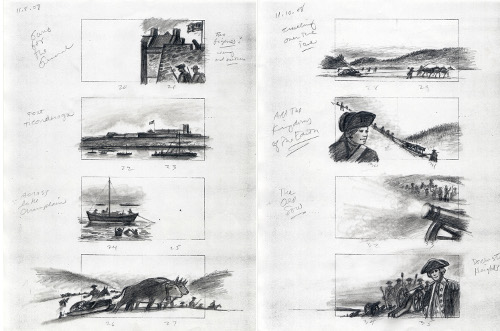
Henry Knox: Bookseller, Soldier, Patriot
(Clarion, 2010)
In Wendell Minor’s America, Silvey writes: “Few illustrators today pay as much attention to research as Wendell Minor. In every book he works on,
he makes sure that he gets the minutest details right.”
(Click to enlarge)

When I am writing my own books, however, it’s probably not surprising that, as a recovering dyslexic, a picture storyboard always comes first. Virtually all my ideas for books are born out of interest in and passion for the subject. A good example of this is my collaboration with Bob Burleigh on Night Flight: Amelia Earhart Crosses the Atlantic, which incorporates my love of aviation, a great historical event, and an extraordinary woman in American history.
(Paula Wiseman Books, 2011)
(Click each image to enlarge and see in more detail)
(Click each image to enlarge and see in more detail)
(Click to enlarge)
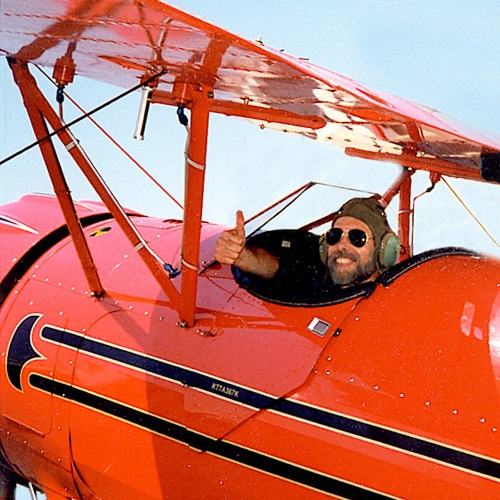
Our new book, Edward Hopper Paints His World, is another example of our shared love for the artist and our attempt to make him more accessible and understood by the very young reader. It is our hope to provide an insight into a child’s learning something about the creative process and the courage it takes to maintain your own voice and your own vision.
I have always made a point of designing my books from cover to cover, even including the copyright page. Sometimes my designs survive intact; other times my designs are in collaboration with an in-house designer in order to achieve an overall mutually-agreed-upon look of the book. I now deliver my completed dummies via email as PDF files. This makes for faster and more accurate communication.
2. Jules: Describe your studio or usual work space.
(Click each image to enlarge)
Wendell: The first thing most visitors to our studio usually say is “What a great place to work! It feels like a tree house!” Because the north and west views from the studio look directly into the woods, we have wonderful light and the pleasure of watching an incredible variety of wildlife and bird life from just about every window: deer, fox, raccoons, turkeys, an occasional coyote, hawks, and cardinals — to name just some. A two-minute walk along a grassy path from our home, the first floor of the studio has a long row of flat files and an extensive library of reference books, as well as my 50+ picture books. It is also where I do my computer design work.
(Click each image to enlarge)
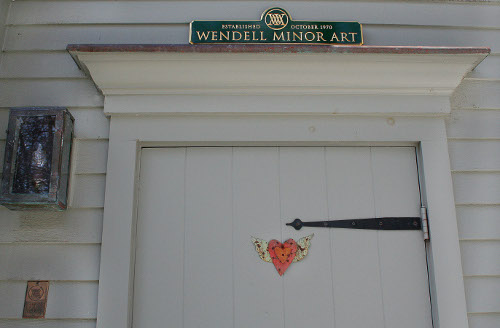

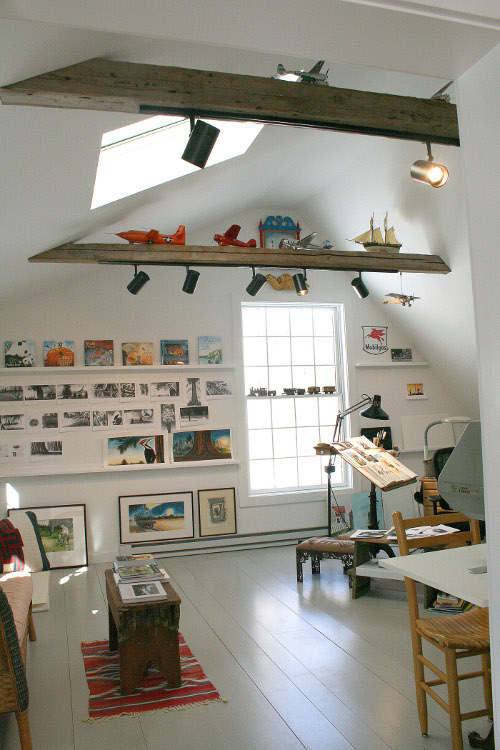
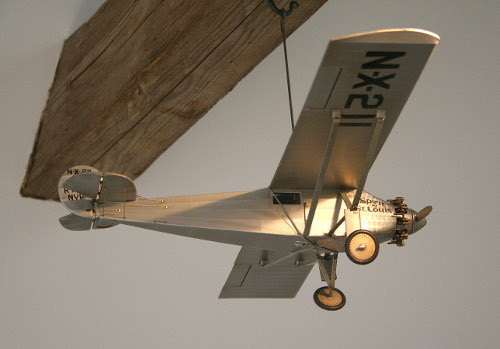
(Click each image to enlarge)

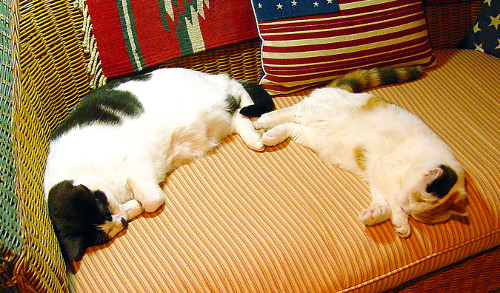
Upstairs, turn right and you’re in my studio; turn left, and you’re in Florence’s work space. And whether you turn left or right, you’ll find Sofie and Cindercat, who “travel” to work with us every day in their individual carriers, which Florence and I jokingly refer to as our kitty attaché cases. With large windows on three sides of the studio building, plus four skylights, we both enjoy the wonderful light that pours onto the white walls and wide-plank wood floors. Built-in bookcases fill part of one wall—one can never have enough bookcases!—and my early 1900s’ antique drawing table (much like the one that Norman Rockwell used) is angled to have a perfect view into the woods. Left of my drawing board and across from the bookshelves is a small wicker couch and bench where even more books are usually piled and a southwestern Indian rug underneath it, which my cat Cinder loves to sleep on (when she’s not sleeping on the couch on top of one of my jackets). On another wall facing my drawing table, sketches for the book in progress are taped in sequence, as are paintings once they are completed. Numerous artifacts from southwestern pottery to folk art to model airplanes are scattered around the studio, and even sit atop the 200-year-old antique barn beams from a salvaged Litchfield County dairy barn.
and studio work space (other three)
(Click each image to enlarge)
Florence’s side of the studio (separated from mine by an open doorway and a cut-out window) has the same great light, more book shelves, a work island, file cabinets, her computer, flowers, and lots of evidence of the books we’ve done together, including stuffed penguins and bears—some of which have been collected by Florence and others given as gifts—and a bulletin board that was meant to hold important work documents, but quickly morphed into a personal photo gallery.
The overall feeling of the studio is a combination of early New England and Southwest culture with a Shaker-esque approach to everything that is visually pleasing. When you put in as many hours as I do in the studio, it’s got to be a place that I look forward to being in. And that it is!
(Click each image to enlarge)
3. Jules: As a book-lover, it interests me: What books or authors and/or illustrators influenced you as an early reader?
Wendell: My favorite children’s book author and illustrator of my childhood still holds a very special place in my mind: Beatrix Potter. She too had a love of science and nature and landscape painting, not to mention animals. She kept and loved many animals and studied their every move, thus creating some of the most endearing and lovable creatures in children’s literature. The stories of Peter Rabbit are still my favorites.
And race in the regatta. Row, row, row your pumpkin!”
How Big Could Your Pumpkin Grow? (Nancy Paulsen Books, 2013)
(Click each above to enlarge)
4. Jules: If you could have three (living) authors or illustrators—whom you have not yet met—over for coffee or a glass of rich, red wine, whom would you choose? (Some people cheat and list deceased authors/illustrators. I won’t tell.)
Wendell: Even though I have had occasions to meet many of the illustrators I very much admire, a few of the ones I haven’t had the opportunity to sit down with over a cup of coffee or a glass of wine, but would like to are: Chris Van Allsburg, James Gurney, and Nancy Ekholm Burkert.
Needless to say, it would be a thrill to meet Beatrix Potter, N.C. Wyeth, or Garth Williams.
The Last Train
(Roaring Brook, 2010)
(You can click most of the images above to enlarge them and
see them in more detail …)
5. Jules: What is currently in rotation on your iPod or loaded in your CD player? Do you listen to music while you create books?
Wendell: Going for even a single day without music is absolutely inconceivable to me. Within remote reach from my drawing board I have an iPod, a CD player, and Sirius Satellite Radio.
My musical tastes are all over the map, so at the moment, aside from switching channels on Sirius radio, I’m listening to Diana Krall, James Taylor, Hank Williams, and my great friend, Gordon Titcomb -– killer pedal steel player, banjo picker (and dobro, and guitar and …) extraordinaire. Gordon and I collaborated on a picture book, called The Last Train, based on his song of the same name. He has performed with the likes of Arlo Guthrie, Judy Collins, Paul Simon, Dottie West, Eric Weissberg, Steve Martin, Blood, Sweat & Tears, and dozens of other musicians I so admire.
In general, I love all kinds of music: classical, jazz, American popular songbook, early country, bluegrass, and last but not least, classic rock and roll.
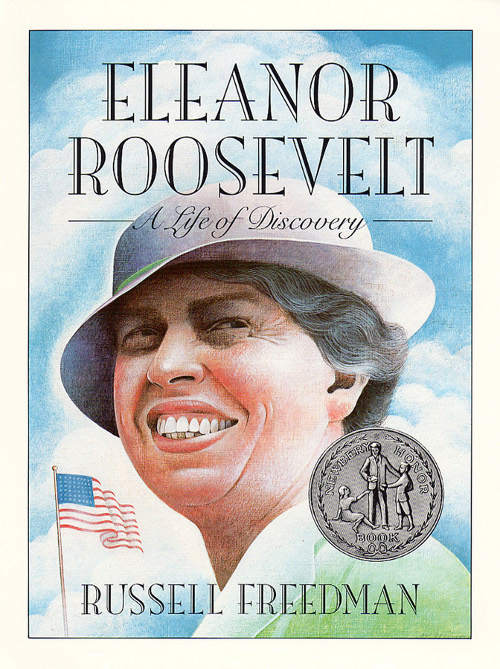
6. Jules: What’s one thing that most people don’t know about you?
Wendell: I was born left-handed, but my father changed me to a right-hander, thinking that it would be easier for me to live in what he perceived was a right-handed world. Would I have been a better artist as a left-hander? I have pondered that question, but who knows?
(Click each to enlarge)

(Click to enlarge)
(Click each to enlarge)
(Click to enlarge)
(Click to enlarge)
(Click to enlarge)
(Click to enlarge)
(Click to enlarge)
7. Jules: Is there something you wish interviewers would ask you — but never do? Feel free to ask and respond here.
Wendell: Q: Which artists’ biographies have you read, and what have you learned from them?
A: After reading countless biographies of artists and illustrators, I have discovered that there are three basic truths that always seem to shine through: Very successful artists and illustrators have always had to deal with their insecurities, their struggles to have their own voice, and the feeling that there was no end to improving their art. I have gained a great deal of strength from knowing that all artists from the past, the present (and, likely, the future) seem to share these same challenges.
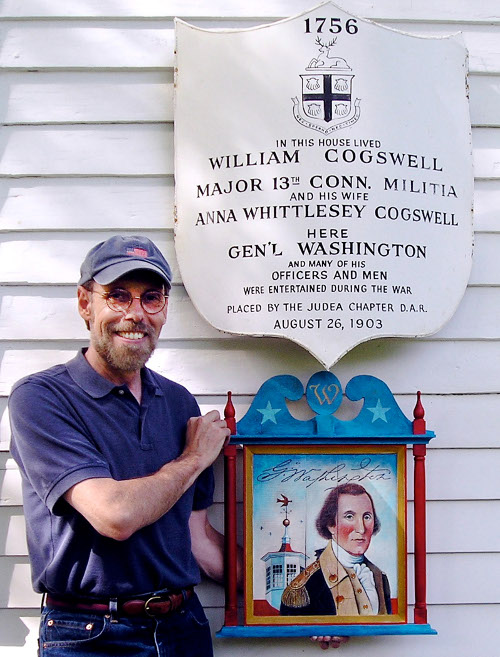

Jules: What is your favorite word?
Wendell: “Curiosity.”
Jules: What is your least favorite word?
Wendell: “Can’t.”
Jules: What turns you on creatively, spiritually or emotionally?
Wendell: Learning something today that I didn’t know yesterday.
Jules: What turns you off?
Wendell: Ignorance posing as intelligence.
Jules: What sound or noise do you love?
Wendell: The early morning song of a cardinal: Cheer, Cheer.
Jules: What sound or noise do you hate?
Wendell: Chainsaws.
Jules: What profession other than your own would you like to attempt?
Wendell: Pilot or Radio Announcer.
Jules: What profession would you not like to do?
Wendell: Working in a slaughter house, which I once did to earn money for art school.
Jules: If Heaven exists, what would you like to hear God say when you arrive at the Pearly Gates?
Wendell: “Congratulations! Finally, no more deadlines.”
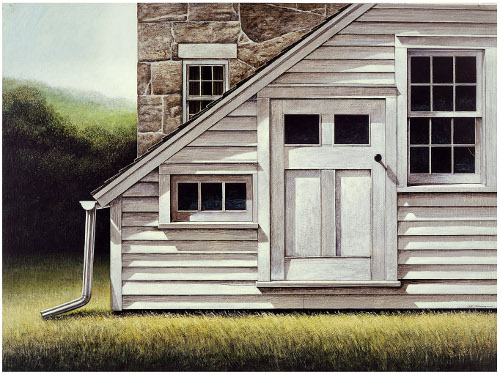
All artwork and images are used with permission of Wendell Minor.
The spiffy and slightly sinister gentleman introducing the Pivot Questionnaire is Alfred, © 2009 Matt Phelan.
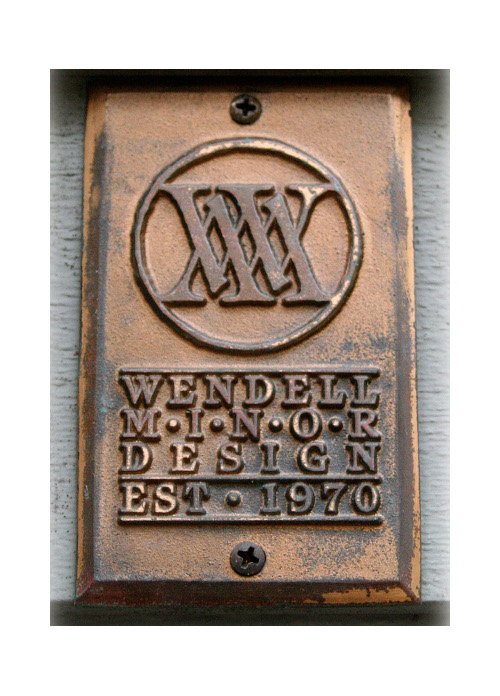
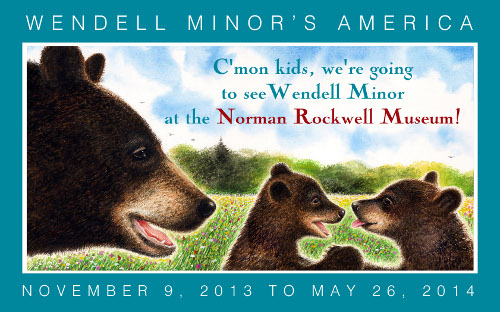


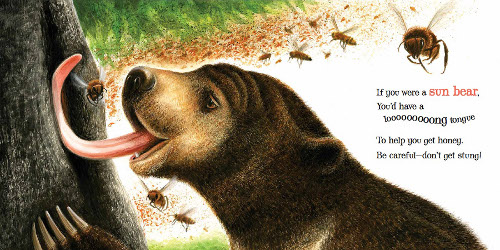
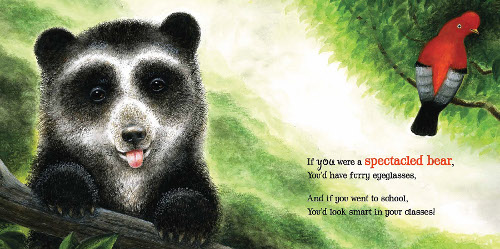
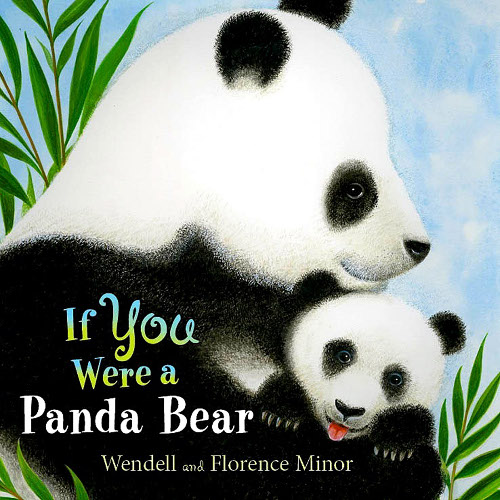
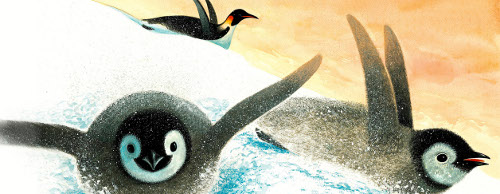
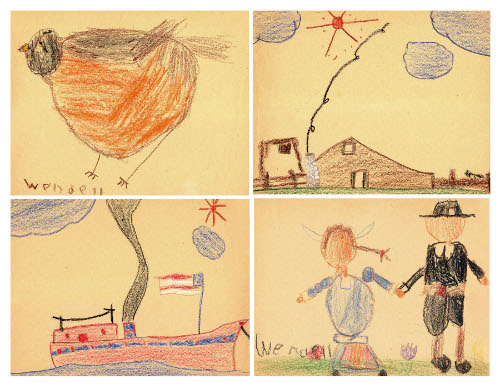
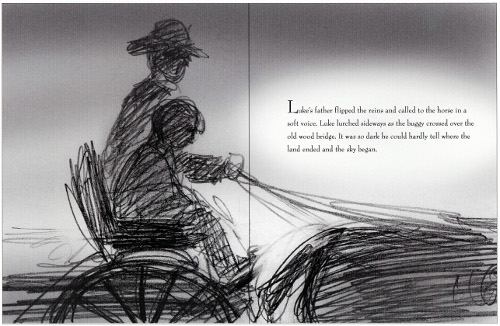
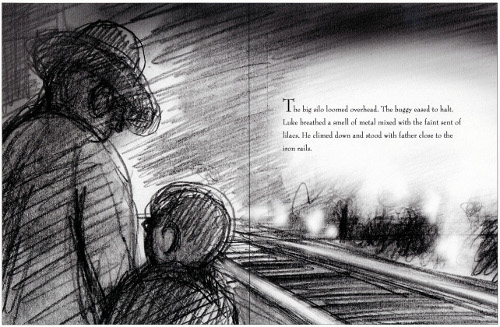

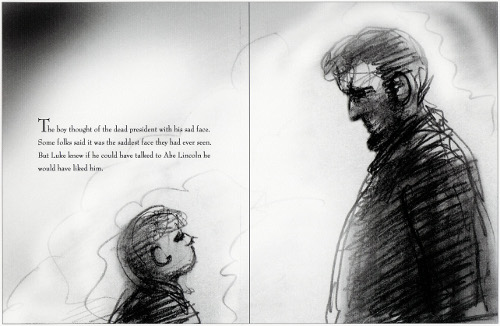
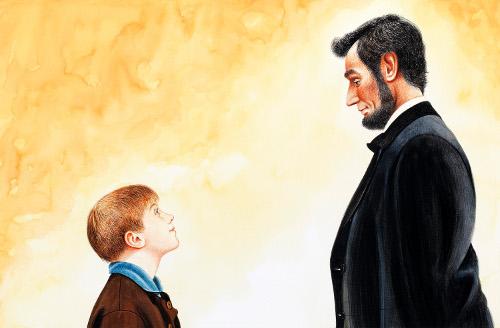
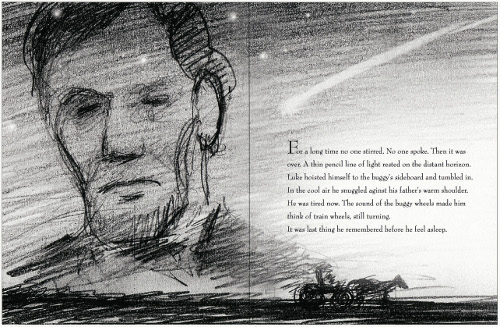
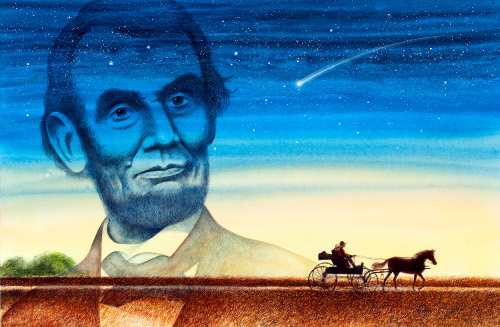
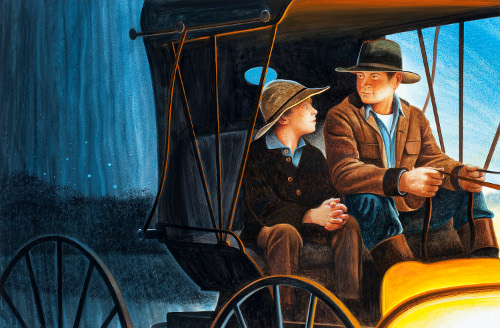
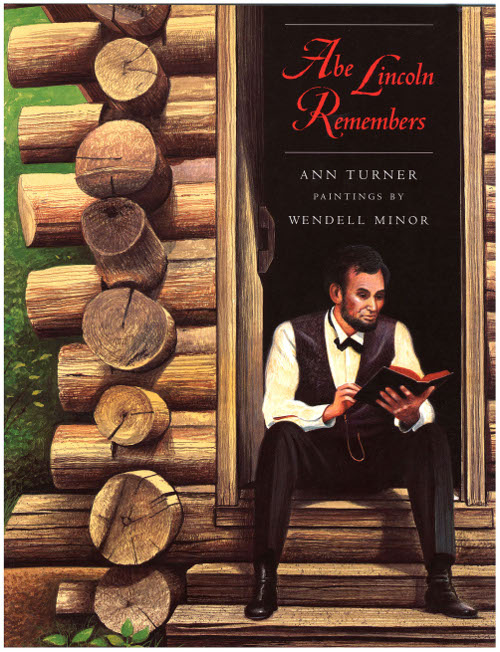
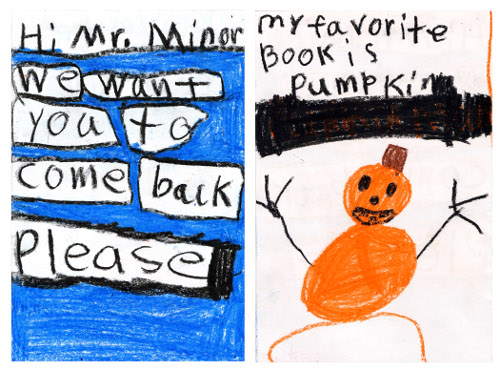


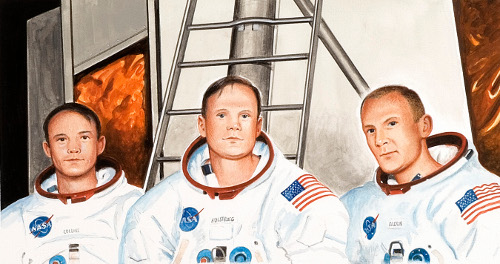


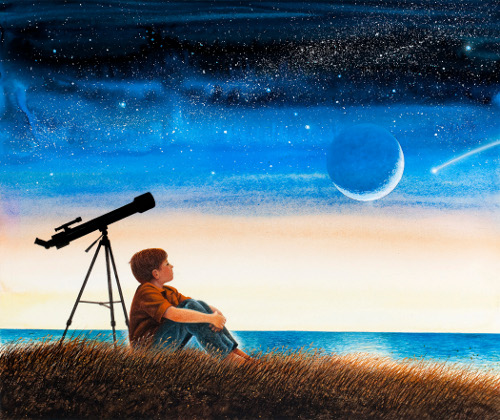
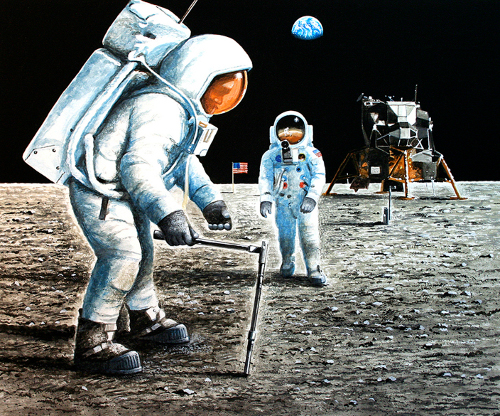
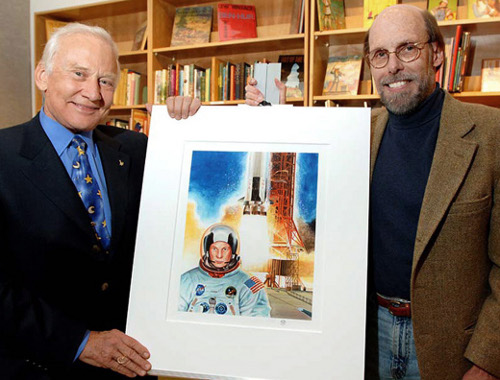


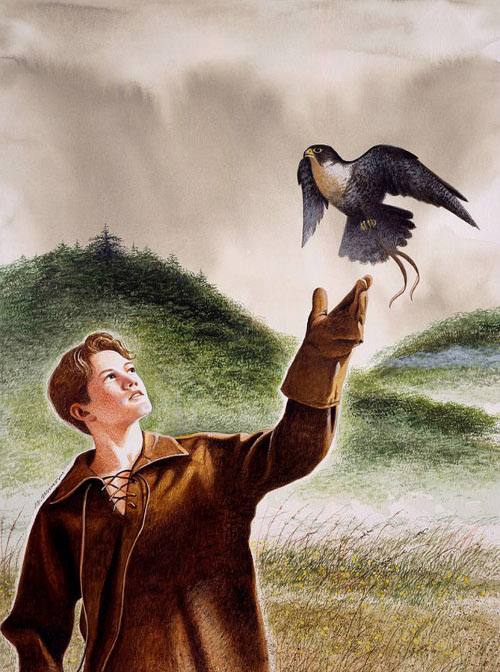
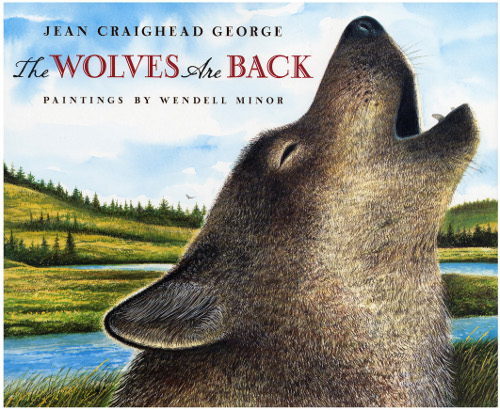
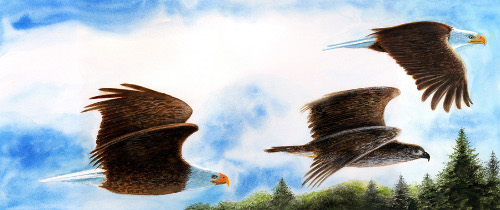
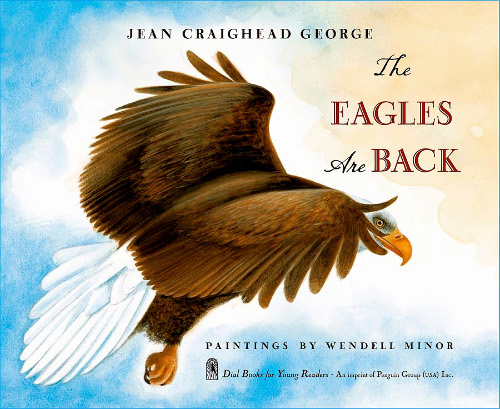
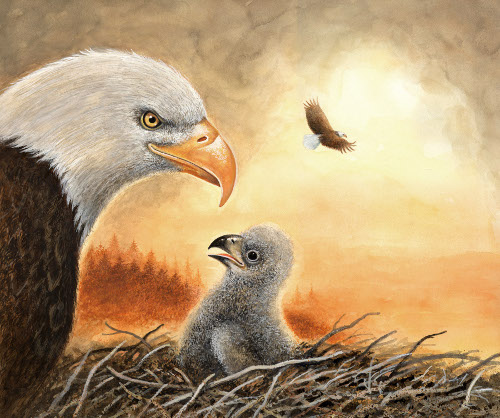
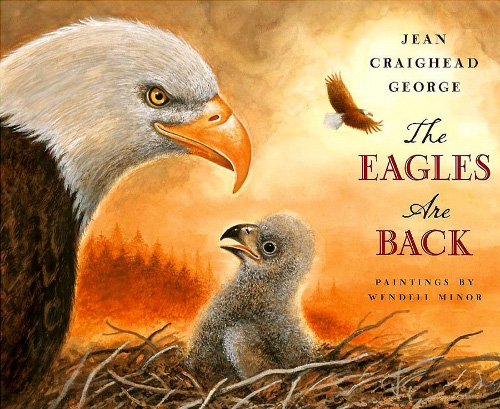
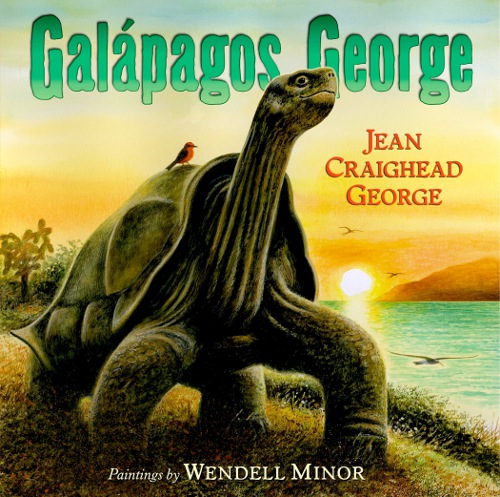

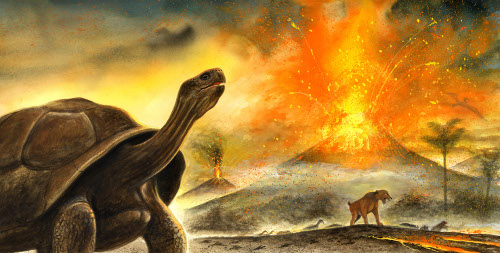

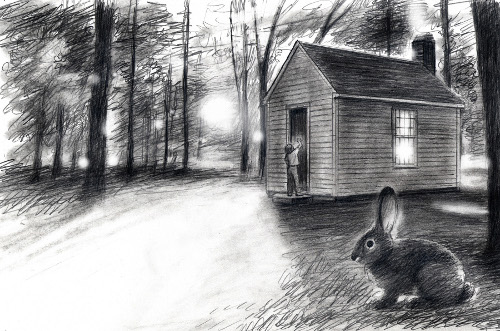




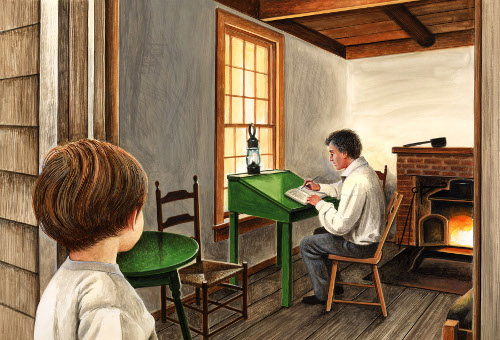
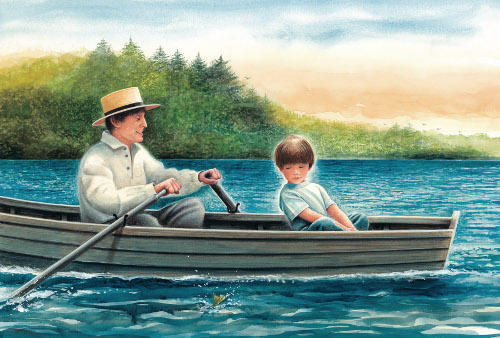

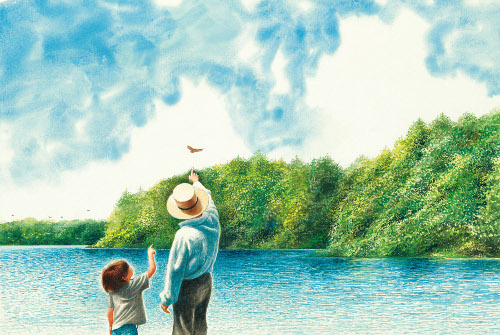
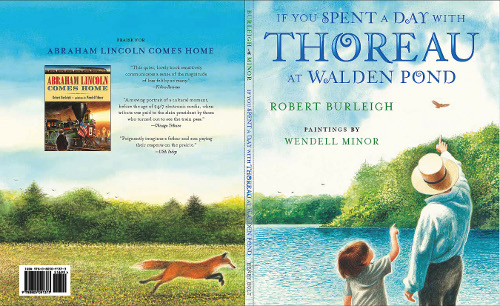

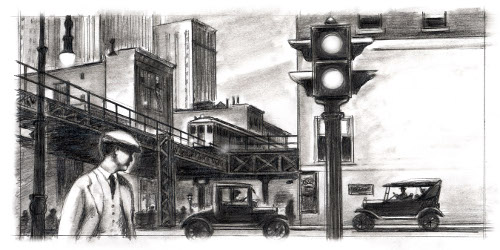
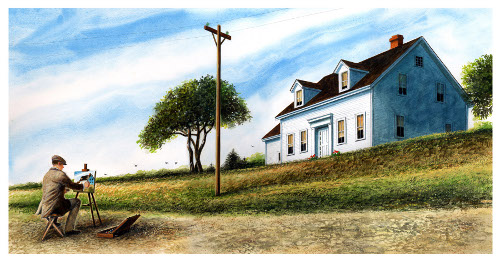





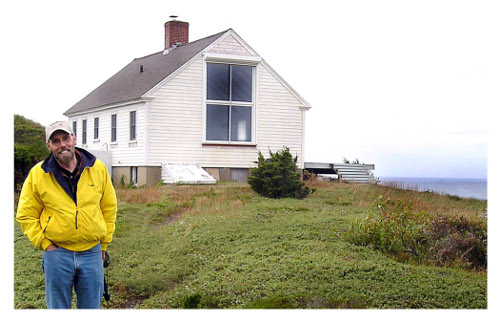


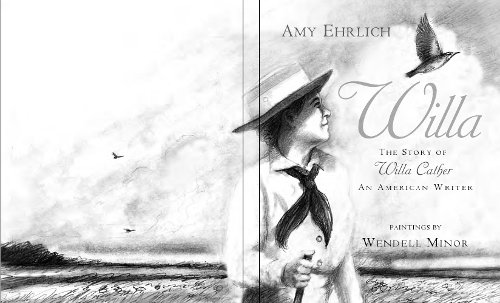

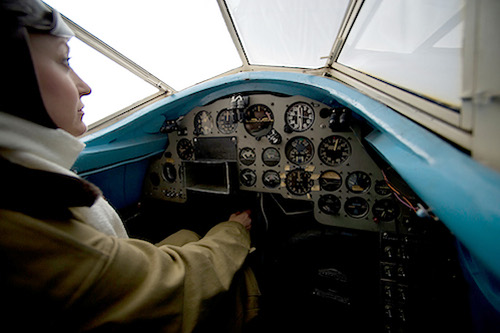

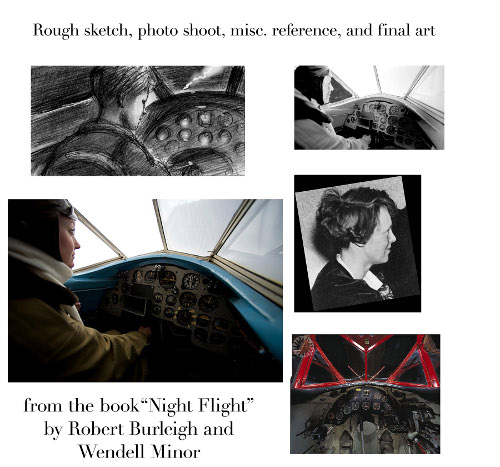

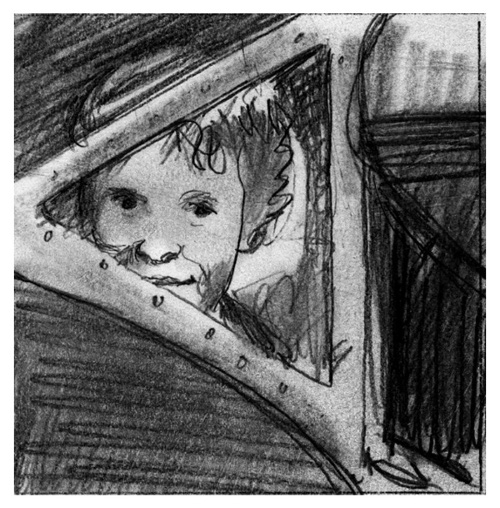

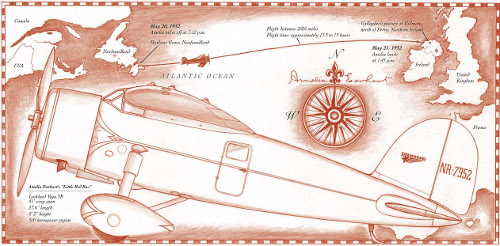


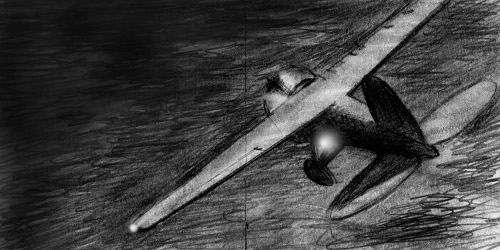
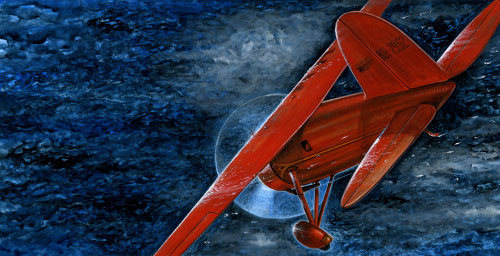


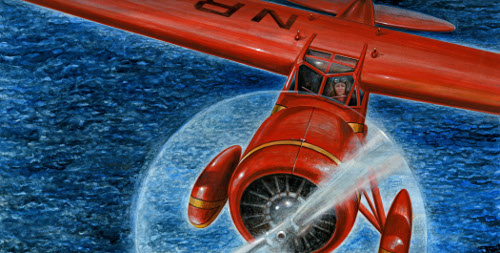
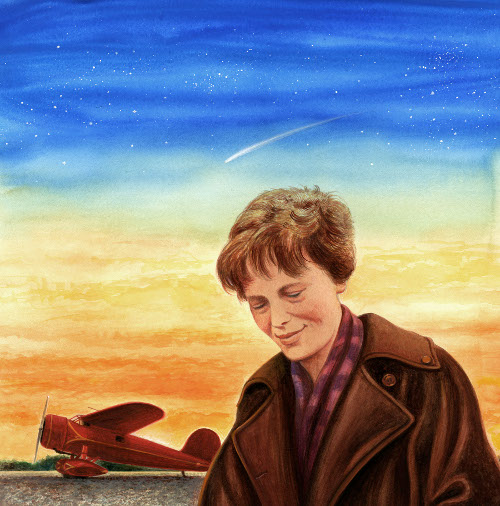
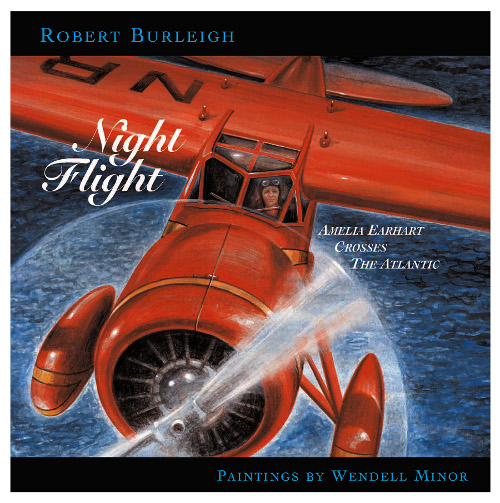


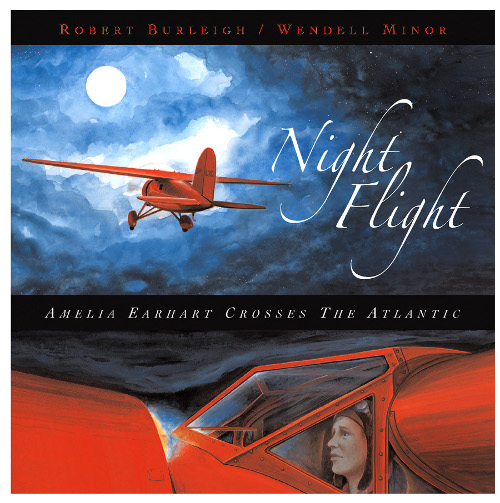
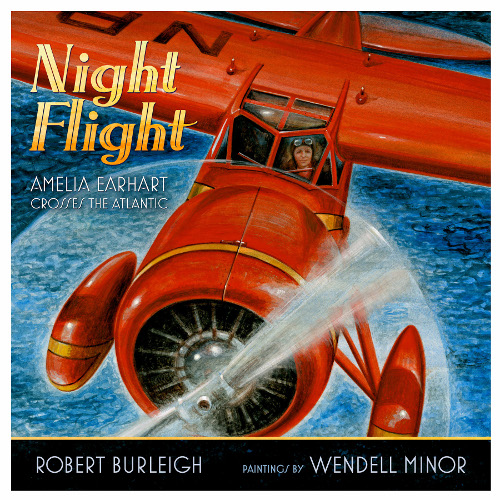
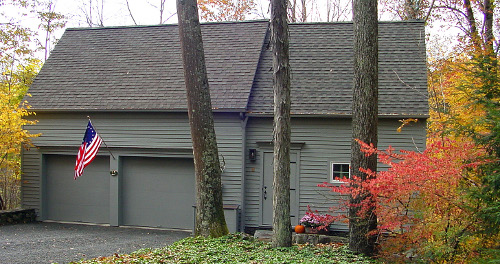



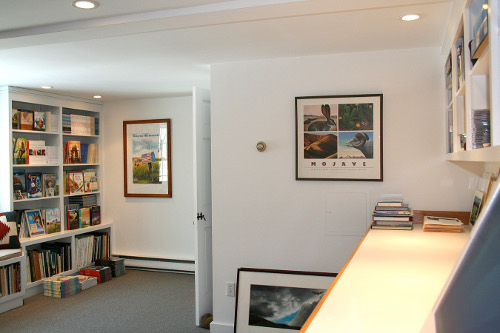
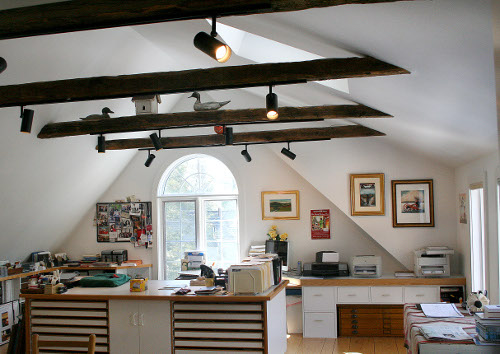


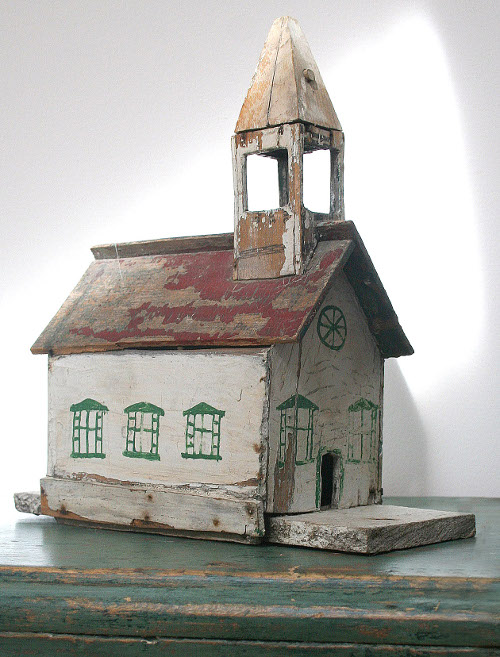

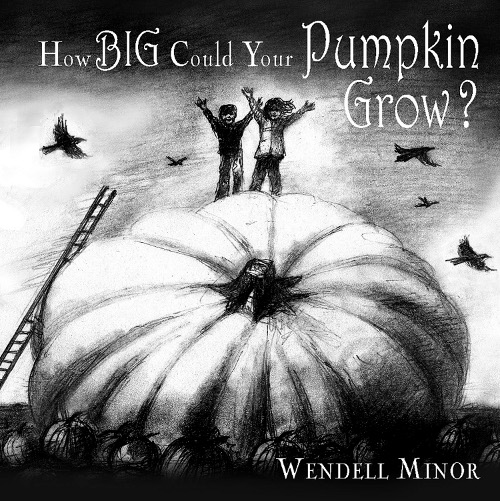


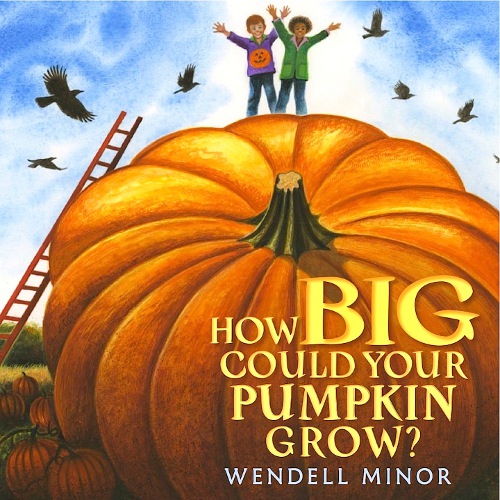
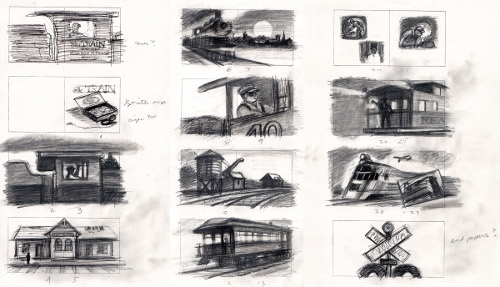
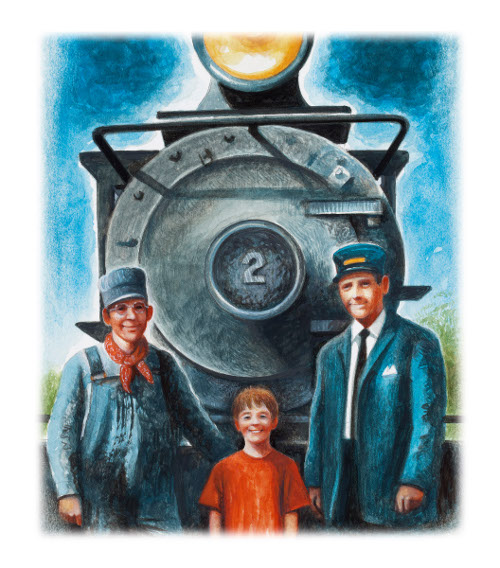
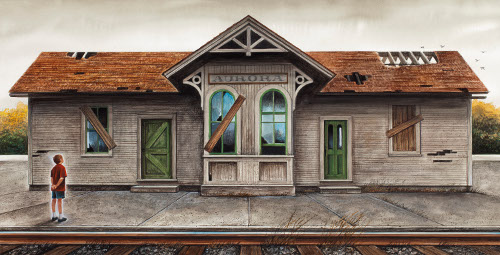
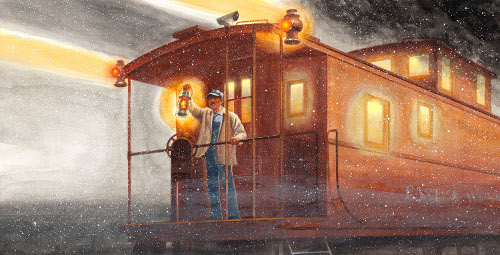


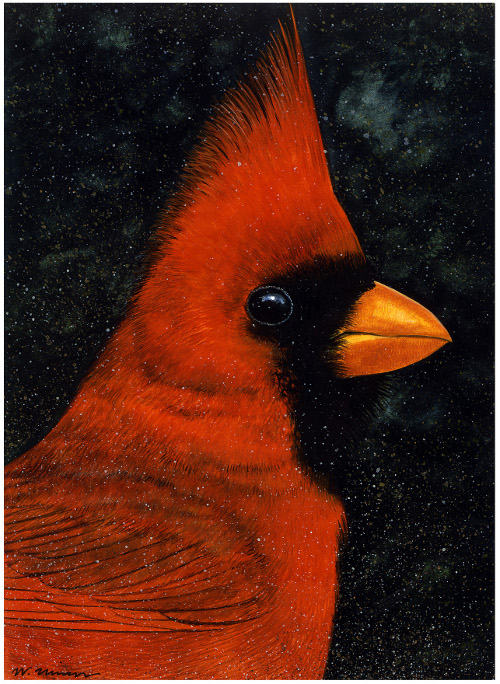
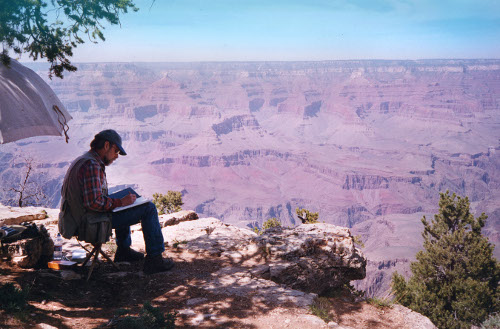
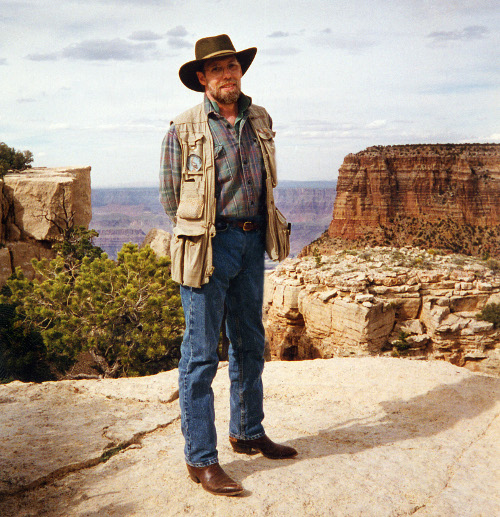
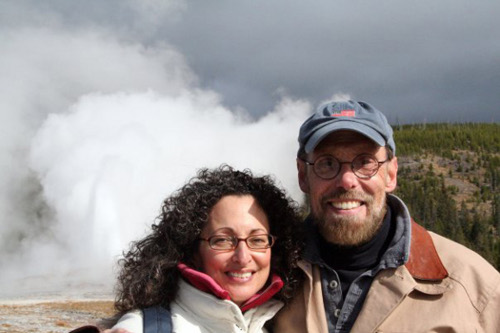
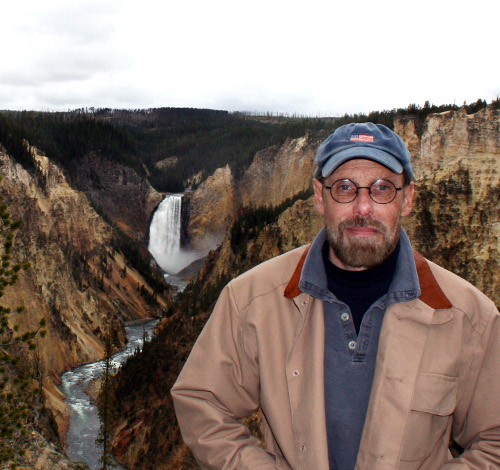
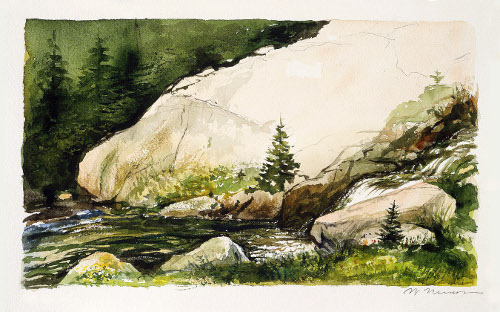

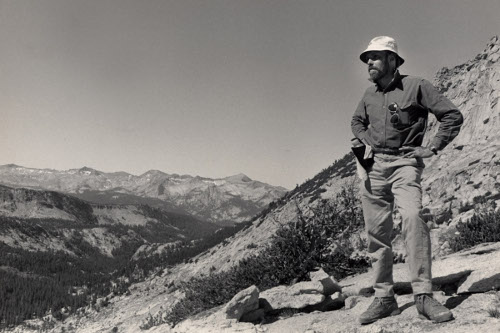

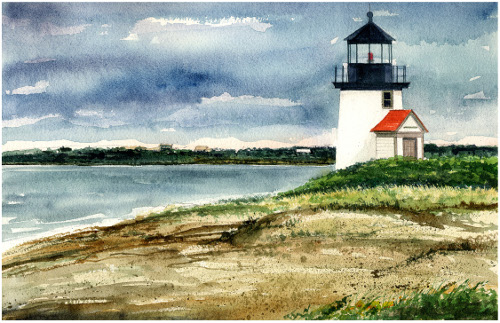

Wendell’s Rockwell Museum retrospective is simply not to be missed. As much as I thought I knew Wendell’s work, the full genius of what he does, has done, is on display there.
I had only a couple of hours to view it. I need to go back for hours more,
Jane
Love seeing all of this, Jules & Wendell (& Florence)! Fascinating.
WOW – I feel like I’ve walked through the whole world, just seeing this man’s work. And, I want to get every single one of those books for every kid I know – I am so thrilled to see the guy behind the Jean Craighead George books. I cannot WAIT to get my hands on the Edward Hopper one.
I love that he still uses models. Love, love, LOVE that.
With tears in my eyes..A wonderful journey..Thank you so much…..Happy Birthday to you..Who knew we’d reach 70 so fast !? Enjoy your day.. love, Marcia
Thanks for sharing this in-depth look at Wendell Minor’s work. Thanks to Wendell for sharing as well. He is prolific and brilliant. His work speaks volumes!
Wow!! I am in awe !!.. Thanks for this terrific piece!! Wendell’s art is amazing!! I have loved it for many years. Going to the Rockwell museum for his opening was also a highlight. He is truly a genius in his ability to bring joy to the onbserver of his art…
Love that he still has his childhood art.. !! Thanks for your hard work, your career and for sharing your talent with the world!!
wow, these are really nice pictures, thank you for sharing this post, it was really helpful.
[…] A 2014 interview with Wendell Minor. […]